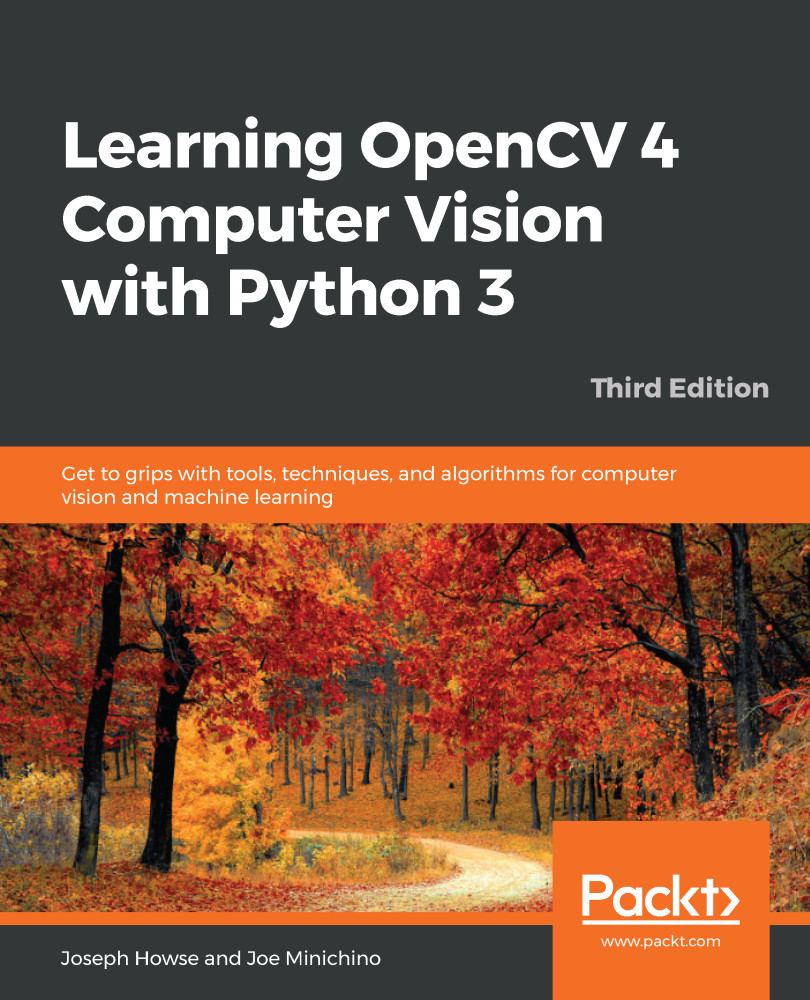In this chapter, we will explore a selection of techniques from the vast topic of object tracking, which is the process of locating a moving object in a movie or a video feed from a camera. Real-time object tracking is a critical task in many computer vision applications such as surveillance, perceptual user interfaces, augmented reality, object-based video compression, and driver assistance.
Tracking objects can be accomplished in several ways, with the most optimal technique being largely dependent on the task at hand. We will take the following route in our study of this topic:
- Detect moving objects based on differences between the current frame and a frame that represents the background. First, we will try a simple implementation of this approach. Then, we will use OpenCV's implementations of more advanced algorithms, namely, the Mixture of Gaussians...


